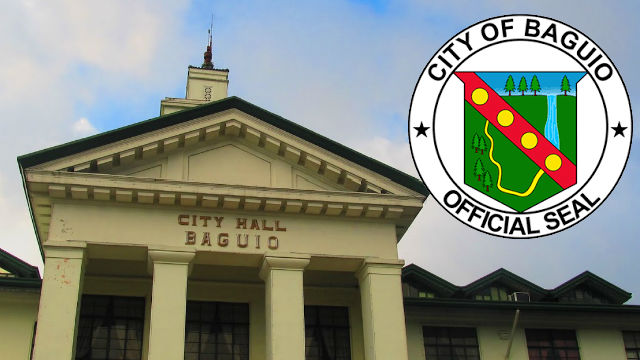BAGUIO CITY – A premise of most development programmes is: whatever benefits men, benefits the women.
Be it training for new skills or an employment generation scheme, such programs usually do not specify which gender should be the main beneficiary or if both women and men are to benefit.
This, in theory, makes for non-discriminatory programmes. But sometimes, in practice, the tendency has been to leave women out of the action.
Such is only one among the many that women often go through to overcoming barriers for their economic empowerment.
Gender equality is intrinsically linked to sustainable, inclusive growth and development. No society in any part of the country can afford to lose out on the skills and capabilities of half of its population if it wants to realize the promise of a good future.
As gleaned by World Bank (WB), The Philippines Country Gender Action Plan FY20-24 (PCGAP) identifies addressing women’s labor force participation as a priority area. With that priority in mind, the Philippine action examines constraints for women’s employment by looking at education, labor market participation and wages with the focus on the role of childcare and social norms.
With the Philippine country gender action plan, it helps to guide in the reduction of inequalities between men and women, and boys and girls in alignment with WB’s Country Partnership Framework.
PCGAP priorities over focuses on the following:
– Increasing labor force participation. This is to deepen national dialogue on policy reforms addressing the demand for and supply of child care and to increase women’s participation in development programs;
– Improve education quality and outcomes. Contribute data and analysis to support reforms aimed at improving education quality, outcomes for males and females, increasing human capital accumulation with links to skills acquisition and school- to-work transition;
– Address gender-based vulnerabilities. Ensure equal access to social assistance programs targeting vulnerable women in times of pandemics and calamities, and;
– Enhance gender parity in the public sector. Creating an enabling policy environment to reduce parity gaps in the public sector.
Gender disparities are complex due to their multi-dimensional aspects and are barriers to human development in any part of the Philippines, be it in the urban or rural areas. Expanding women’s opportunities, enhancing their productivity and promoting their economic participation are therefore promising avenues for fostering inclusive development, according to the country’s “Ambisyon Natin 2040” vision.
In recent years, the Philippines legal framework has helped move the country towards gender equality, like the passage in 2009 of the Comprehensive Magna Carta of Women Act. The current status of women in the Philippines is both a cause for optimism and reason to accelerate their job opportunities.
In fact, on several fronts, the Philippines is considered “best performer” when it comes to gender equality as compared with its country neighbors in East Asia, Pacific, Association of Southeast Asian Nations (ASEAN) and even globally.
Despite the Philippines having embraced gender equality among its current policy priorities and closing gaps in many human development dimensions, pesky problems continue to hound the female workforce brought about by changing environmental conditions, conflict and other deep-seated gender gaps that have long been the bane of the working Philippine women.
Here is a walk-through of what PCGAP notes that confronts the women labor force:
PCGAP says first, “Three times more women than men have stopped working due to care-giving responsibilities during Covid-19.”
Second, Philippine female labor force participation is much lower than men’s,” as reflected in the latest January 2020 Labor Force Survey.
Third, “Female labor force participation in conflict-affected areas is significantly lower than in the rest of the country.”
Fourth, “In many instances, conditions and policies in workplaces are such that it makes it difficult for women to balance work and domestic responsibilities, like caring for children and the elderly.” This lack of supply of child and elder care contributes to the low production and under- performance of women in the labor market.
Fifth, “Women are paid less than men with the same educational attainment. However, higher returns accrue for educational attainment. An additional year of education for a woman in the Philippines offers a higher percent rate of return compared to men,” PCGAP stresses.
Sixth, “Female labor force is still concentrated in lower paying jobs and care responsibilities are not equally distributed between men and women, thus affecting labor force participation.”
Seventh, “Survey suggests that female farmers across the country tend to have lower access to services.” And eighth is, “There are much fewer women in management positions in the private sector than men.”
Increasing the Philippine labor force, according to the World Bank and PCGAP, is instrumental for accelerating economic growth and fulfilling Philippine aspiration to achieve an upper-middle income economy.
An increase of women’s labor force by even a mere 0.5 per cent per year would translate to an increase in Gross Domestic Product (GDP) per capita by about 6 per cent by 2040 and an estimated 10 percent by 2050.
Such would translate into an additional US$500 in GDP per capita by 2040 and US$1,325 by 2050, which would provide households with substantial income gains. The Philippines GDP would be US70 billion higher than the baseline projection by 2040 and US$190 billion higher by 2050.
Understanding the complexities of gender gaps in the Philippine scenario can be discomfiting due to several factors on supply and demand sides often at play.
Take for example the country’s fertility rate. The Philippines is grappling with a declining birth rate which now has the lowest fertility rate in Southeast Asia, after Singapore. The Philippines Statistics Authority (PSA) found out that the birth rate among Filipino mothers aged 15-49 dropped to 1.9 children last year, a decrease from 2,7 children in 2017.
What does the statistics indicate? Although the Philippines is not faced with an aging population, the share of the working-age population will rise by 66 per cent by 2040.
Hence, in order to harness the potential of this democratic trend, the country must be firm in its promotion of gender equality in human capital and economic opportunities so women who currently make up 39 per cent of the labor force, can more easily participate, WB and PCAGP explain.
Importantly, the Philippines made important advances towards gender equality but in recent years, the progress became constant.
In 2021, the World Economic Forum Global Gender Gap Report noted the Philippines has closed 78.4 percent of its overall gender gap, placing 17th among 156 nations, placing it higher than the East Asia Pacific average of 6.8 per cent, making the Philippine best second performer, after New Zealand, but represents a nine-mark decrease compared to year 2018.
In terms of specific-specific gender gap, the Philippines has closed the educational and health and survival gaps but has closed only 79 per cent of the economic gap and 36 per cent of the political empowerment gap. Although these proportions are above the regional averages, all but the Philippines health and survival indicators decreased from 2018, World Bank and PCAGP clarify.
PCAGP serves to guide the World Bank in its efforts to address obstacles to gender equality outlined in the Country Partnership Framework of World Bank and focusing on four pillars. Both aspire at achieving greater involvement of women in social and economic activities.
PCGAP serves as a response to various international instruments on women, peace and security, supporting implementation of national mandates on gender and women equality, as well as peace and development.
Leo Bumilsang, long-time farmer-businessman from Benguet paraphrased what the experts said about women when they said: “In many instances, we found we had failed to take the role and contributions of women into account.”
Bumilsang explained by saying, “What the experts wanted to convey is, if the demands of simple justice and human compassion are not reason enough, then we should do it because what is good for these women is good for the world.”
“While there is much for the Cordillera region, other regions in the Philippines to celebrate, there’s still a lot more to be done to empower women in our society, uphold their equality before the law and promote their welfare and well-being,” Bumilsang adds.
Bumilsang knows whereof he speaks. For he has been a constant witness to Benguet and Cordillera women who have spent more time on the fields than the men, then return home, cook, tend to the children and other pressing home chores, aside from their work on the farm.














